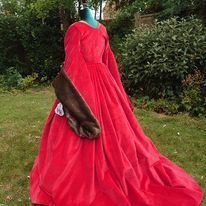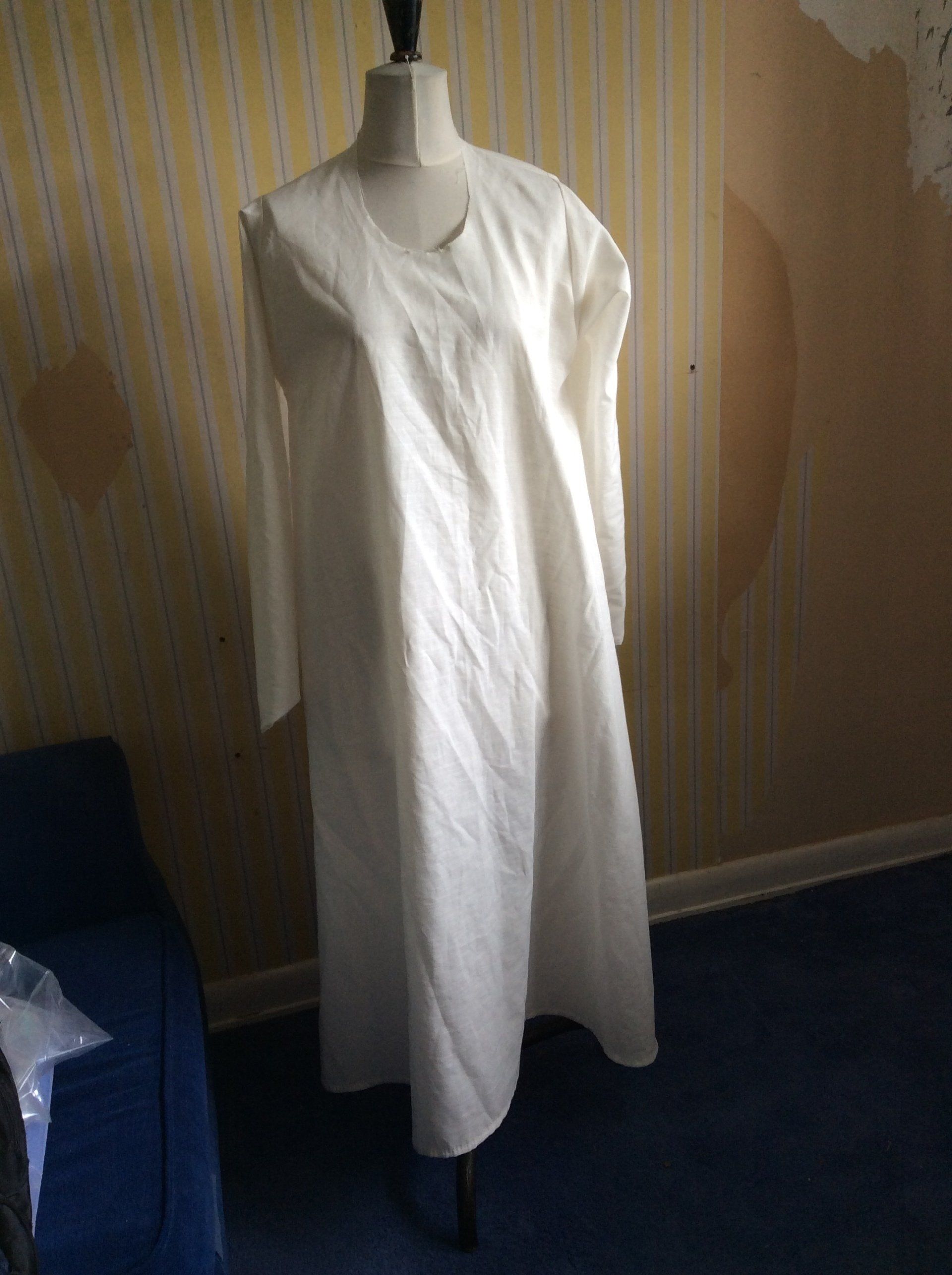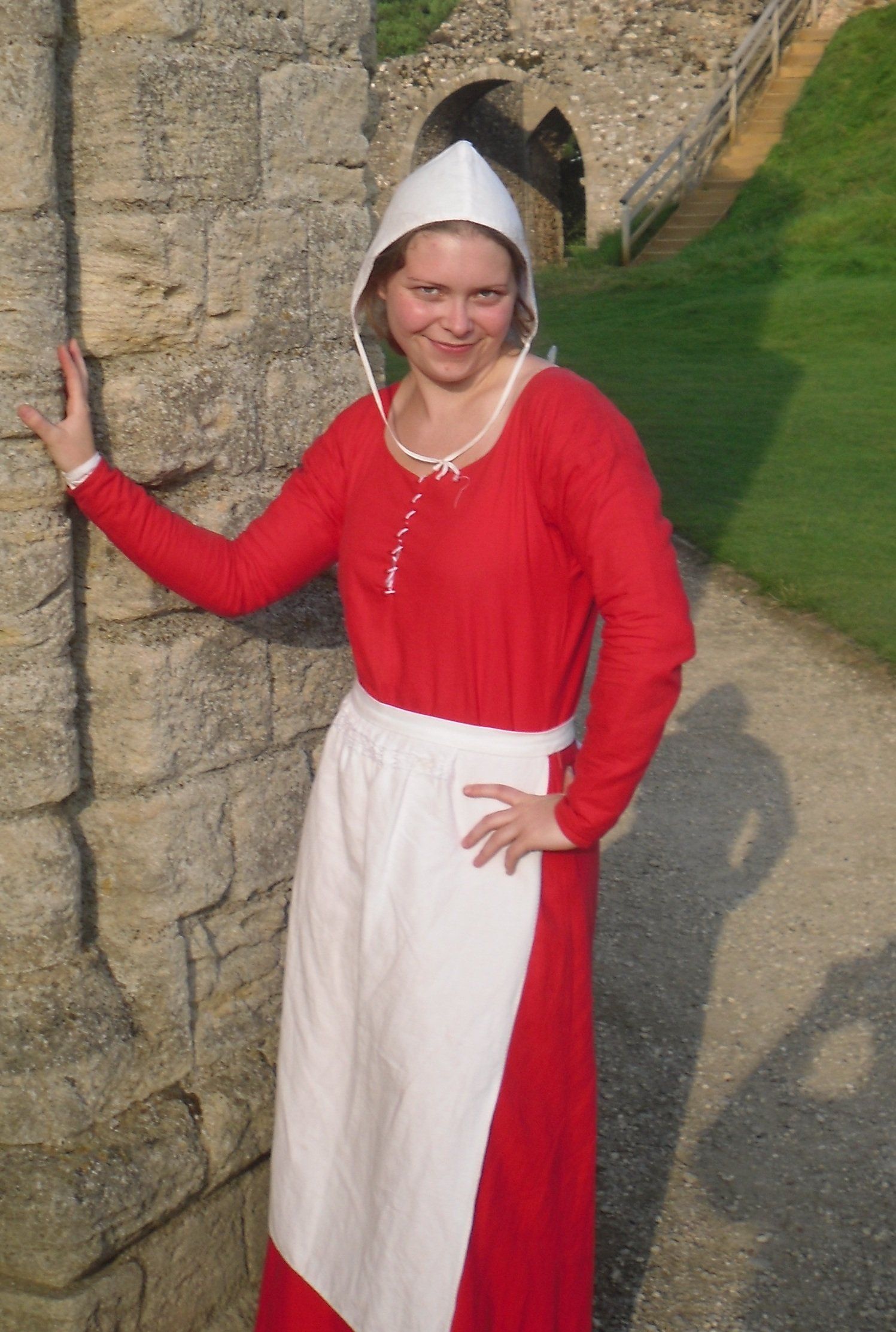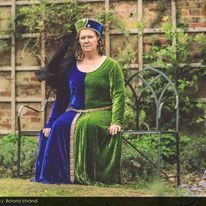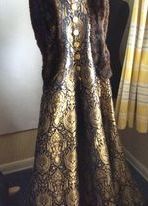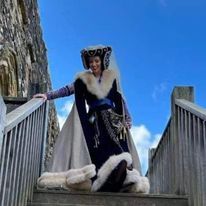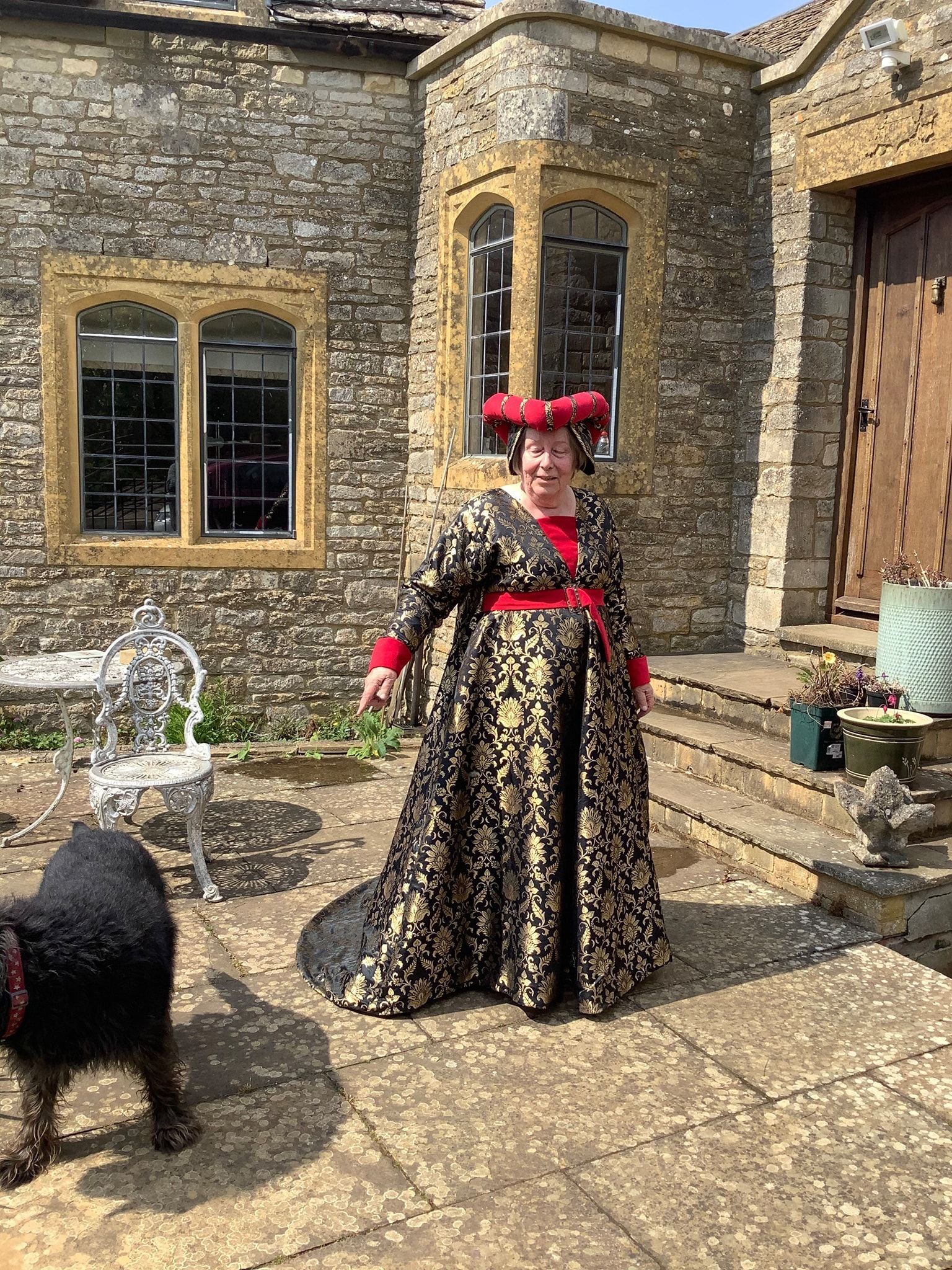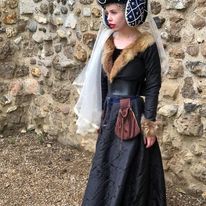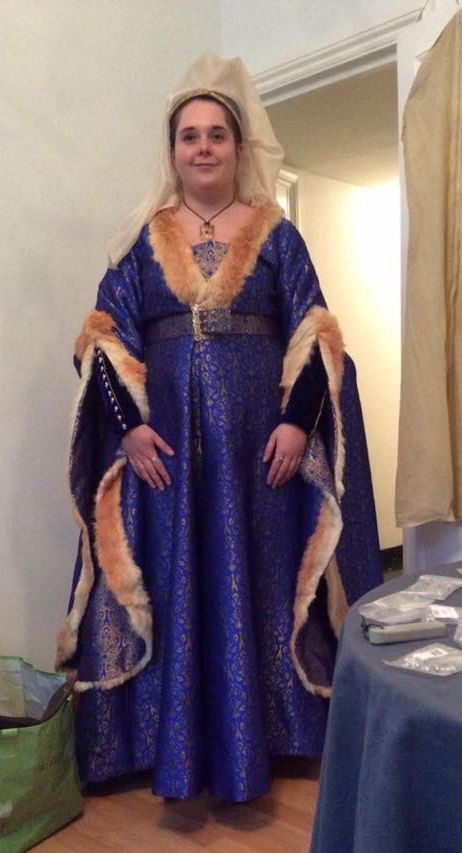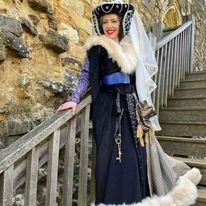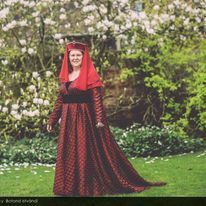

Women's Clothing
Women's Clothing: 14th Century Fashions
14th Century Fashion
Ladies clothing in the 14th century started as clothing for comfort and warmth and quickly changed into the fashionable garments now we know. It went from a loose fitting garments to fitted garments, using gores (V shapes), laces etc. to change the shape.
The more fabric you can waste on the garment the wealthier you were, so trains, dagging, and fullness becomes the order of the day well into the 15th Century. Necklines also become lower and wider.
There are so many changes it is hard to tell when one style finished and another one starts. Garments were often being given as gifts or were left in wills, and then altered to the current trends.
Smock / Cote / Chemise
12th - 19th Century Underdress
This white linen petticoat type garment was loose fitting, long sleeved and around 6 inches above the floor. White is considered next to godliness so it was frequently warn next to the skin. There is mention of “bags” at front of cotes, these have now been recognised as a type of bra. They have found a 15th century sleeveless cote, with lacing down the side and built in bra similar in shape to modern bras.
If they decided to wear something at night there were also worn as nightdresses. They would then change to a clean garment in the morning.
Ladies underwear is not often mentioned in the scrolls of things purchased or shown in paintings. Women’s undergarments, like knickers are normally shown as the men’s braise in paintings,
although they have now found some 15th century knickers which are very similar to modern tango.
Click Here to see more about the 15th century underwear found
Kirtle
12th - 15th Century Dress
This started as a lose garment with the gorse (V shaped piece of fabric) attached under the arm. By the latter part of the 14th Century the gorse were included in the pattern of the dress. They were attached just above the hip making the dress more fitted. They also used the front and side seams to obtain a more figure hugging shape. Normally made in wool fabric, sometimes they came in coloured linen. As you go up in status they were made in velvet or silk. It could also be a mixture of fibres with the silk for shine and wool or linen for strength.
The sleeves were tight, with the higher status women using buttons down the outside of the sleeve to show off their wealth. Buttons were expensive so the more you had the wealthier you were. These were always on shanks.
Lacing was used on most garments as it helps you not only to get into the garment but also in the fitting. The lower classes would lace down the front so they could fasten it themselves in a spiral. When you could afford a maid you had the lacing down the back. As the century progressed you can also see large buttons down the front, but we are unsure if they were fastenings or decorations.
It also was noted that crossing the lacing was kept for prostitutes. So watch how you lace your dress ladies!
In the middle to end of the century you can also see tippits (A ribbon fabric approx. 3” wide attached to the top part of the arm and falling to around calf length). As the century went on these tippits were added to the sleeve and got more decorative some even having dagging. Necklines go from a round high neckline at the beginning of the century to a lower neckline mid century. The latter part of the century took it even further with almost off the shoulder necklines for the higher standing ladies.
Surcoat
Early 14th - Late 14th Century Over Coat
These started as open side garments showing off the kirtle
underneath. They were fully lined in a range of fabrics, sometimes even fur for the higher standing ladies. As the century progressed the front panel became thinner and the train became longer.
Others were fitted with sleeves flowing down to the floor, some with elaborate dagging, with the front of the sleeve being elbow length allowing the elaborate lining to be seen.
Houppelander
Late 14th - Mid 15th Century Over Coat
This garment does not come in till the latter part of the 14th century. It is a combination of the cotehardie and Surcoat. A very full dress gathered under the bust with a 3” wide belt. The neckline also changes from the round neckline to a low V down to the belt. This shows of either the kirtle underneath or can be worn with a modesty panel. Velvet and fur were popular trimming.
Women's Clothing: 15th Century Fashions
15th Century Fashion
Women’s clothing in the 15th Century is completely different from start to finish. At the beginning garments were full with the bust line being the main feature of the garment. By the end the waist is the main feature people wanted to highlight. Women of the higher classes were using corsets and boning to achieve the shapes they wanted.
For the lower classes changes are a lot slower and restrained.
Quite often different names of garment can be used for the same garment.
Burgundian / Houppelander
The Burgundian / Houppelander was a much fuller garment, showing of the amount of fabric you could afford. The neckline was now a V from shoulder to below the bust, showing of the Kirtle underneath or with a modesty panel. Velvet and fur was a favourite trimming.
These garments came with either a tight fitting sleeves, there were often trimmed with velvet or fur, or they are shown with sleeves down to the floor. There floor length sleeve either came with a slit for the arm to go through or a opening at elbow to floor, again they can be trimmed with fur. You can often see the sleeve of the Kirtle showing through these openings.
A train on the Burgundian / Houppelander was also a prominent feature.
